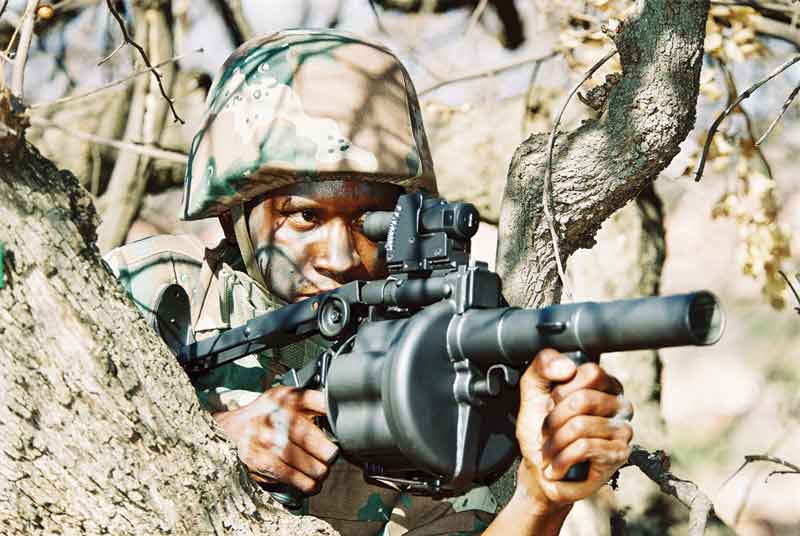A fore-grip was added and a scope was mounted to the top, eliminating the old leaf sights like that of the M-203. The scope allows a Marine to follow the grenade to the target and immediately adjust and follow up with a lethal volley of indirect fire.
The Columbians and Israelis have used them as well, likely via South African sources of supply, and Croatia manufacturing their own version. According to MGL Milkor Marketing, more than 20,000 of their unique weapon are now used in some 36 countries around the world. The very nice South African versions that first popped up around 1984 used a range-compensated Aimpoint Mk 2 oiptical sight; there've been some interesting innovations in combat optics since then, and it's nice to see that the *thump gun* has kept up with the times.
The Milkor MGL six-shot 40mm grenade launcher is the world's first mass-produced multi-shot 40mm hand-held weapon. Developed by the South-African company Milkor, it entered production in 1983, and served with South-African National Defense Forces for more than twenty years. Since the 1996, an improved version of the basic design entered the production, it has been designated MGL Mk.1. The Milkor MGL is also used by more that twenty other countries worldwide. Milkor MGL offers significant firepower increase, compared to US-made M79 single shot 40mm launcher. The rapid-fire capability (six shots in less that three seconds) is essential in ambush situations and in quick-pacing urban warfare. The Milkor Mk.1 is now offered for export, and an almost exact copy of Mk1, is manufactured in Croatia by the RH Alan company as RGB-6. The most recent modifications of the Mk.1 launcher, which are manufactured and offered in USA under license by the Milkor Marketing Inc., are the Milkor Mk.1S and Milkor MK-140. These two launchers differ from original Mk.1 by having stronger, stainless steel frame (as opposed to the original aluminium frame), as well as by having four Picatinny-type accessory rails around the barrel. The difference between Mk.1S and Mk-140 is the length of the cylinder - while Mk.1S retains the original cylinder, the Mk-140 has a longer cylinder, which can accommodate a wider variety of the less-lethal 40mm ammunition, which usually has longer warheads. Both types also an fire all standard 40x46mm 'lethal' ammunition, including HE, HE-FRAG, HEDP and others.
The Milkor Mk.1 is a revolver type, hand-held grenade launcher. The six-shot cylinder is rotated by the clockwork-type spring for each shot. Spring is wound manually during the reloading. For reloading, the rear part of the frame (along with the pistol grip) is unlocked and then rotated sideways around the top strut of the frame, until the chambers in the cylinder are exposed for reloading. Once cylinder is reloaded, the rear part of the frame is rotated back and locked into position. The double-action firing mechanism has a manual safety above the pistol grip. All Mk.1 launchers are fitted with the red-dot type sight, with range scale. Modern versions, M.1S and Mk.1L, also can be fitted with other types of sighting equipment, using Picatinny rail on the top of the barrel. The top folding shoulder stock has a rubber recoil pad.
 *more here* and *here*.
*more here* and *here*.